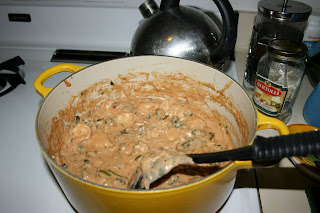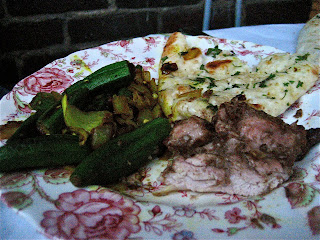 Earth Day was Thursday. This week there was a conference in Bolivia seeking to address global climate change. This conference highlights one of the things that I find most inspiring about the environmental movement: it’s global nature. Present at this conference were all sorts of people: scientists, politicians, and native campancinos from all over the world. There are few movements that include so many different people, from so many places, of course there are few movements that effect so many different people. All of these people, Bolivian farmers, and Panamanian fisherman; they don’t take out time to come to these conferences because they have been convinced by scientific arguments, or because politicians tell them its important. They attend these conferences because their lives are effected by global climate change on a daily basis. The Bolivian conference highlights the sad reality of this crisis: climate change effects first and most acutely the poorest and most vulnerable in this world not those who have the greatest power to effect climate change.
Earth Day was Thursday. This week there was a conference in Bolivia seeking to address global climate change. This conference highlights one of the things that I find most inspiring about the environmental movement: it’s global nature. Present at this conference were all sorts of people: scientists, politicians, and native campancinos from all over the world. There are few movements that include so many different people, from so many places, of course there are few movements that effect so many different people. All of these people, Bolivian farmers, and Panamanian fisherman; they don’t take out time to come to these conferences because they have been convinced by scientific arguments, or because politicians tell them its important. They attend these conferences because their lives are effected by global climate change on a daily basis. The Bolivian conference highlights the sad reality of this crisis: climate change effects first and most acutely the poorest and most vulnerable in this world not those who have the greatest power to effect climate change.So, to honor the Bolivians and their conference Scott and I had Bolivian Night tonight. It was fabulous...and spicy. Now I do not recall having the dish I made tonight when I was in Bolivia. I really only remember eating a lot of roasted or grilled chicken with yucca, potato or rice and beans. Well, I also remember having homemade water buffalo cheese bought off the side of the road. While all of this was very good, I decided that the first meal was not really typically Bolivian, but could be found in any number of countries (roasted chicken and rice is a staple almost everywhere) and the second...well, I wouldn’t even know where to begin. Finally, I considered making Saltenas, which I also enjoyed in Bolivia, but are really breakfast fair and would not feel like a proper dinner (though good appetizer perhaps). So I searched online and found the following recipe for Pollo Picante. It was very good, I recommend it highly. As the name suggests however, it is spicy. While we enjoyed the chicken, the sauce and peas were just too hot for Scott or I to enjoy. Due to the spiciness, the boiled potatoes I served with it worked well.

Picante de Pollo
Spicy chicken
Ingredients:
3 pounds chicken, divided into parts
¼ cup ground cayenne pepper
2 cups of white onion, cut into small strips
1 cup tomato, peeled and finely chopped
½ cup fresh locoto or chili pepper, finely chopped
1 cup green peas, peeled
½ cup parsley, finely chopped
1 teaspoon ground cumin
1 teaspoon crumbled oregano
½ teaspoon ground black pepper
1 tablespoon salt
3 garlic cloves, peeled, chopped and roasted
3 cups broth or water
2 spoonfuls oil
Preparation:
In a large casserole put the chicken pieces with all the other ingredients. Pour the broth or water until covering the ingredients completely.
Set to cook over high heat until it boils, and later over low heat for at least an hour and a half or until the chicken is soft. Stir occasionally.
If while cooking the broth diminished much, add a little bit more of broth or water so that when serving there is enough liquid.
In a deep plate serve one piece of spicy chicken with one boiled potato, cooked aside, chuño phuti and uncooked sauce on top.
Finally, sprinkle the chopped parsley on top of the spicy chicken.
Recipe found at: http://boliviaweb.com/recipes/english/picante.htm
For more information on the Bolivian Conference visit:http://english.aljazeera.net/news/americas/2010/04/201042120510405334.html



